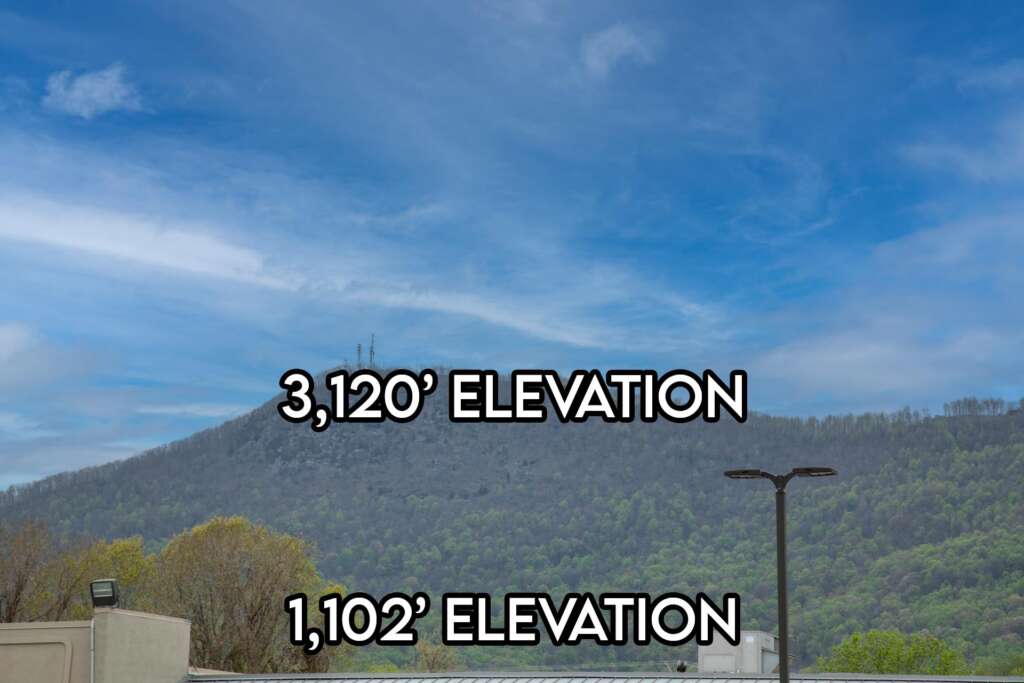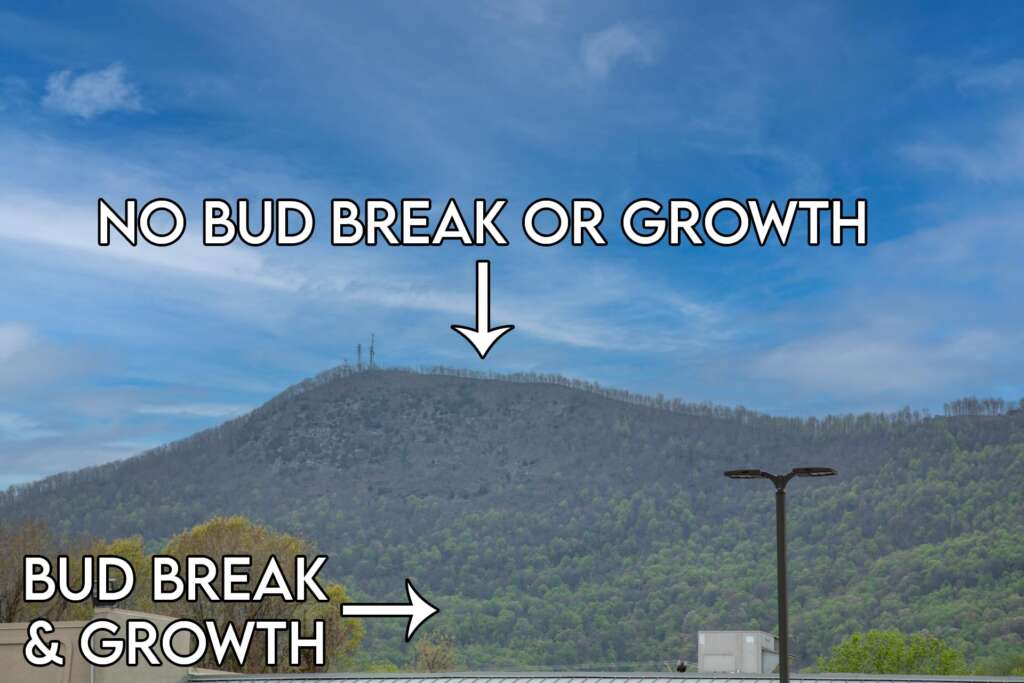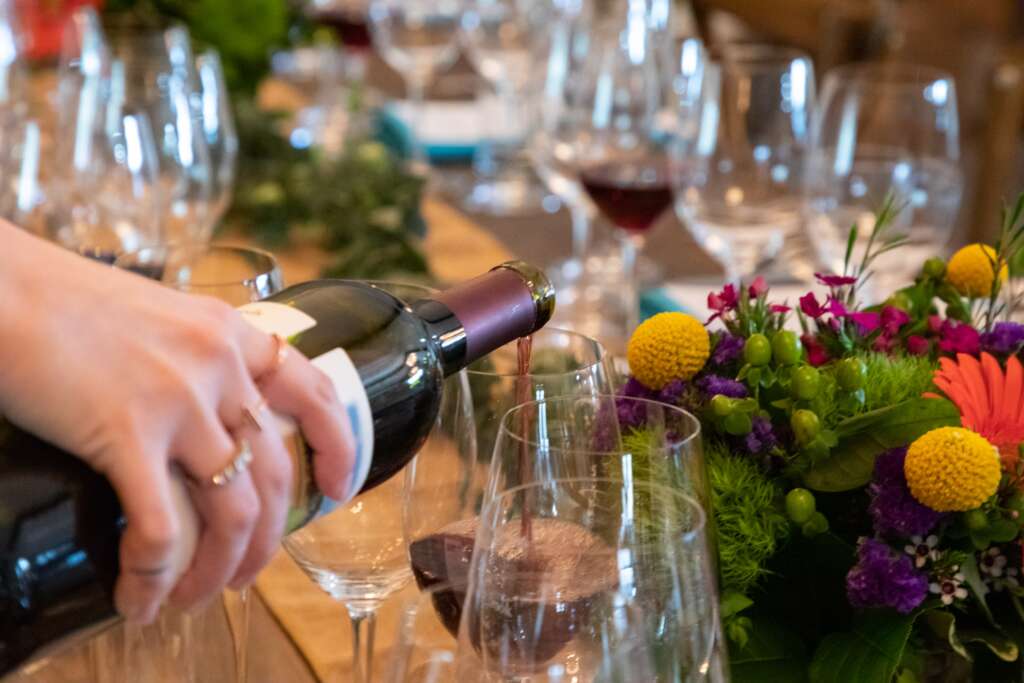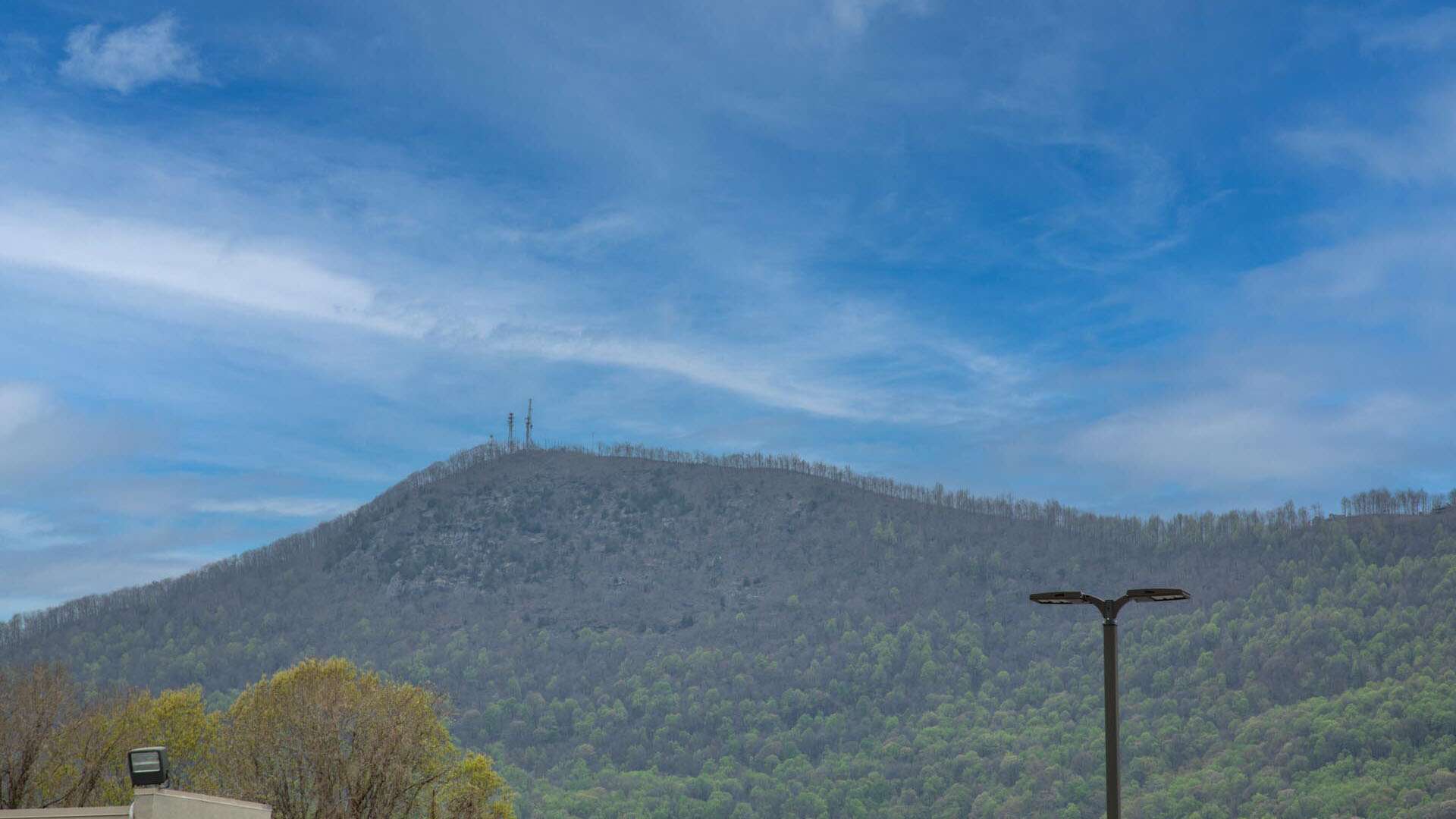I realize that this is a strange title for a blog post but stick with me for a bit and hopefully it will make sense and we will learn a little something about wine in North Carolina. Here we go…
In Columbus North Carolina there is the humble White Oak Mountain which stands at a modest 3,120′ in elevation or about 2,000′ above Columbus with an elevation of 1,102′.

White Oak Mountain is right at the interchange between Highway 74 and Interstate 26 where Highway 74 merges onto I26 and you either go west to Hendersonville or east to Spartanburg (even though it is more north to Hendersonville and south to Spartanburg…I will never understand why I26 is labeled east/west!). You wouldn’t think much of this little mountain but, not to get off topic, it does have some impressive features that you might want to check out. First off, the views from the top are amazing! South of White Oak Mountain (which is where the view is), there is nothing except the piedmont area of South Carolina that goes on for miles. On a good clear day, the view feels like you could see Charleston if you looked hard enough. There unfortunately isn’t a good viewing area on the top as everything is private property with no public parking or space but you can experience the views as you drive the winding White Oak Maintain Road up to the summit. The best view is when you reach the top and you have to slow down and enjoy it from the road. On you way up to the top you will also pass by the other impressive feature of White Oak Mountain – Shunkawauken Falls. This 150′ waterfall is literally 6 feet of the road and impossible to miss on the drive up. It is very impressive after a nice rain storm but always has water flowing over it. Both of these features make White Oak Mountain a little more than just a standard mountain and worth checking out if you are in the area.
What Does White Oak Mountain Have to do With Wine?
Getting back on topic…Are you still with me? During a day in early April of 2023, April 3rd to be exact, I was driving from Highway 74 and merging onto I26 when I noticed how Spring was creeping up the mountain. The top of the mountain was bare yet the bottom of the mountain was in full bud break and growth. You can see what I am talking about in this picture:

When I was studying for my tests with both WSET and the Court of Master Sommeliers we learned about the three types of climates that exist when it comes to viticulture:
- Macroclimate – The climate of an entire region.
- Messoclimate – The climate of a particular vineyard.
- Microclimate – The climate of a single row and maybe even a specific vine.
I have to admit that when I was first learning about climate and the effect it has on wine growing, I was a bit skeptical. I remember thinking “Really?” the climate of a single row of a specific vine. This is, however, a fact that climate differences can absolutely occur down to the micro level and dramatically have an effect on the grapes or wine that a particular row or even vine produces. I have personally been in a vineyard and have seen frost damage affect 5 vines in a single row while leaving the rest of the vineyard untouched. Whether it is the effects of frost, the shade from a tree, or the slope of a hill, it is amazing how nuanced the differences can be even inside a single vineyard.
In the example I am showing above, White Oak Mountain, would probably fall under macroclimate. When people here the word macroclimate they typically start thinking much larger like the climate between states or even continents but from a viticulture perspective, it is much smaller than that. In this particular case you have two different wine regions that are right next to each other and White Oak Mountain is almost like a border between them. The wineries and vineyards of the Tryon Foothills lie on the lower elevation side of the mountain while the wineries of Hendersonville, or the Crest of the Blue Ridge AVA, all lie on the higher side of the mountain. The elevation for Tryon is about 1,100 feet while Hendersonville is about 2,100 feet. Physically these wine regions are not that far from each other but the climates are drastically different (as illustrated in the picture).
The Differences…
While an average person might think there isn’t much of a difference between these two regions, here are some facts to consider that will greatly affect the wine in each region:
Bud Break Will be Different for Each Region
This is the most clearly obvious fact that you can take away from the picture as you can see it happening. Bud break will occur earlier at the lower elevation and this is indeed the case. The wineries of the Tryon Foothills will break earlier than the wineries in Hendersonville. So what does this mean? Several things and each with their benefits and/or risks. For one, Tryon will have a longer growing season than Hendersonville. This might allow the wineries of the Tryon Foothills to pull their fruit earlier and potentially miss some of dangerous and potentially damaging heavy rains that are associated with the late Summer tropical storms that can blow through the Carolinas. After veraison, when the grapes get their color, excessive rainfall can ruin the grapes by diluting the sugars or, in extreme cases, cause the skins to burst.
Having bud break earlier also has risks associated with it. Since their vines will typically bud out earlier, the Tryon wineries will have more risk/exposure to late spring frosts that can negatively affect overall yield for the year. You can read more about the risk of spring frosts in my previous post: Spring in the Vineyard.
Temperature Differences
We are only talking about 1,000 feet of difference but that, in general, will equate to about an average of 1 degree difference in temperature. While that may not seem like much, this subtle difference will have an effect on the grapes by slightly slowing the ripening process. In theory this will make the grapes ripen slower and they will be slightly more acidic at the higher elevation compared to grapes at the lower elevation.
The Results…
Overall, if all goes well for a given year and there are no tropical storms or late spring frosts, the longer growing season and increased temperatures may provide the Tryon region with grapes that are slightly higher in sugars, have lower acidity, and have flavors that are more ripe and lush. Does this mean the grapes or wine in Tryon are better than the grapes or wine in Hendersonville? No…Not really. There are so many other factors to consideration when you start getting into the “Which is better?” conversations. There are literally thousands of other factors that would affect the end result which really should be judged by what comes out of the bottle versus analyzing the viticulture processes to determine if something is good or not. For example, some varietals need to be more acidic when they are harvested, and the vineyard may take advantage of these conditions to exploit that. Furthermore, there are things that can be done in the vineyard to mitigate some risk factors. This concept or idea is also larger than the wine regions of Hendersonville and Tryon. North Carolina is a very diverse state with so many different macroclimates that each region is going have its own unique challenges and benefits that are ultimately reflected in the bottle of wine produced by the wine maker. When you think about this globally and how these little nuances factor into the flavors of wine, it really helps you understand why wine is different 2,000′ apart as well as all over the world. It is the millions of little things that make wines from each region so unique, and that is a wonderful thing!

My point in bringing all of this up is more to have a discussion of wine and viticulture theory so that we can learn and become more educated as consumers of wine. Did I accomplish that mission? Was this article enjoyable or did I geek out too much on this one? Please leave me a comment below with your feedback.
Cheers!

